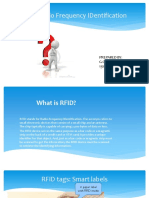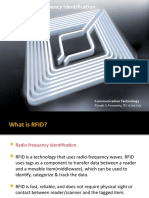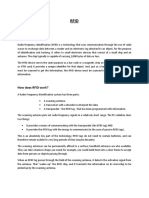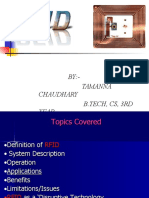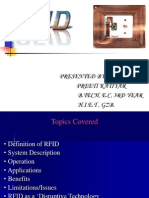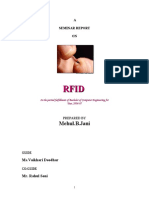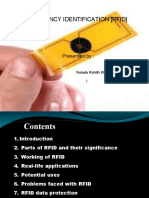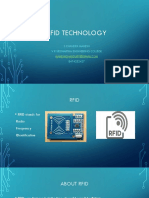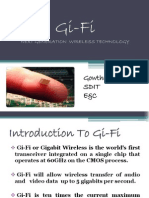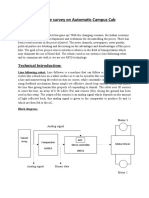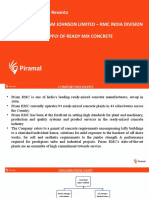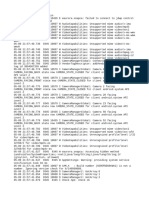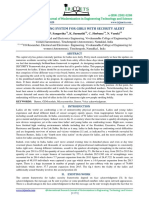0% found this document useful (0 votes)
236 views18 pagesRFID
RFID technology uses radio waves to automatically identify objects or people without requiring line-of-sight scanning like barcodes. An RFID system consists of tags attached to objects, readers that can detect tags, and antennas to communicate between tags and readers. Tags contain microchips and antennas that can be read-only or read-write. Readers send radio signals to request information from tags, which modify and return the signal to the reader. RFID provides benefits like non-line-of-sight scanning, ability to read multiple tags simultaneously, and real-time data access, but also has limitations such as cost and potential security/privacy issues if information is not properly protected.
Uploaded by
Gowtham S ShettyCopyright
© Attribution Non-Commercial (BY-NC)
We take content rights seriously. If you suspect this is your content, claim it here.
Available Formats
Download as PPTX, PDF, TXT or read online on Scribd
0% found this document useful (0 votes)
236 views18 pagesRFID
RFID technology uses radio waves to automatically identify objects or people without requiring line-of-sight scanning like barcodes. An RFID system consists of tags attached to objects, readers that can detect tags, and antennas to communicate between tags and readers. Tags contain microchips and antennas that can be read-only or read-write. Readers send radio signals to request information from tags, which modify and return the signal to the reader. RFID provides benefits like non-line-of-sight scanning, ability to read multiple tags simultaneously, and real-time data access, but also has limitations such as cost and potential security/privacy issues if information is not properly protected.
Uploaded by
Gowtham S ShettyCopyright
© Attribution Non-Commercial (BY-NC)
We take content rights seriously. If you suspect this is your content, claim it here.
Available Formats
Download as PPTX, PDF, TXT or read online on Scribd
/ 18







